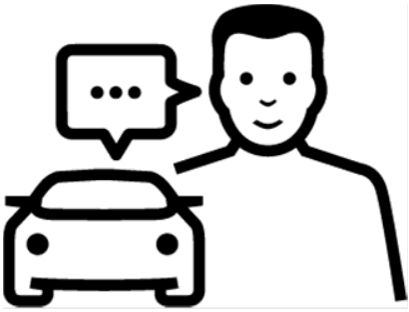The progressing automation leads to a change of the tasks of humans in their activities. System understanding and trust in automation have emerged as the key factors in the use of automated systems.
Our research group investigates these and other questions primarily in the context of mobility. We investigate non-driving-related activities in highly automated driving and investigate the communication between road users in mixed traffic between automated and conventional road users.
Reference Projects
With the aim of realising a continuous automated driving in the city, the Institute of Ergonomics and Human Factors is developing human-machine interfaces (HMIs) in the Human Factors sub-project that enable shared control, teleoperation and cooperation between road users with different levels of automation.
In the Campus FreeCity project, challenges and approaches to solutions for urban traffic problems are researched in a real laboratory by means of a holistic mobility concept consisting of multifunctional, autonomous and locally emission-free “CityBot” vehicles.
During highly automated driving (SAE Level 3), the driver is allowed to engage in non-driving activities (NDA). Knowledge of the NDA desired by the user enables researchers and developers to optimally design the future vehicle interior including seat and readmission requests. Human-centred research identifies the needs of future users and then evaluates them according to resource utilisation.
The aim of the IAD's project is to investigate the communication between highly automated vehicles and other road users (drivers and pedestrians). The communication between road users that occurs in today's urban traffic will be analysed. Moreover, external human-machine interfaces for highly automated vehicles will be developed and evaluated. These enable communication between external road users and humans.
Due to their age-related physical and cognitive limitations, elderly drivers are often limited in their mobility. For example, they often avoid driving at night, in bad weather or at times of heavy traffic, which can lead to social isolation and, in the long term, to health problems. Automated driving offers elderly people a way to maintain or even expand their individual mobility and can also provide more safety on the road. However, due to the performance capabilities and limitations of elderly drivers, it is important to note that HMI design is adapted to the specific expectations and needs of elderly users to make interaction with automated systems attractive and, above all, safe.













